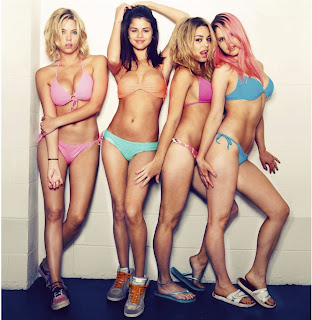Spring Breakers
To be released: March 5, 2013
Dir.: Harmony Korine
Starring: Selena Gomez, James Franco,
Vanessa Hudgens & Ashley Benson
There’s no way to describe a movie like Spring Breakers without
sounding either totally pretentious or scathingly critical. So for all those
who aren’t being paid for a concrete opinion, there is a third position to take
on this movie (generally the most appropriate one).
What the fuck was that?
Among sighs of relief and incredulous laughter, these are usually
the first words muttered by audience members as the lights come up. And even
the high and mightiest critics have agreed with these sentiments.
Here’s the story: Four girls, sick of their deadbeat college town
hold up a restaurant and use their winnings to charter a greyhound bus down to
St Petersburg, FL. Upon their arrival they partake in all sorts of illicit
behaviour and gush about how this will forever be the best time of their lives.
At one particular party, though, they’re arrested for possession of hard drugs
and detained overnight. Luckily, they are bailed out the next day by a loopy rapper/drug
dealer named Alien (Franco). He takes the girls back to his stomping ground and
shows them in all his gold-toothed and cornrowed glory the “American dream”
that he’s living complete with weaponry mounted on every wall, cash laying in
casual stacks around the house and shorts- in every color. Needless to say, he loses a few groupies on the way.
What follows is a chronicle of the remaining characters playing a
hallucinogenic version of “happy family”.
Now before you go scratching your heads over that awful description,
it should be made extra clear that this isn’t a movie about the adventures of
impressionable college girls in the party capital of America. Nor is this a
movie about the dangers of illegal drug use and drunken debauchery. In fact, I
can almost guarantee you will hate this movie until you hear it’s true
intention from the visionary himself.
During the post-screening Q&A at the film’s premiere at TIFF
this past month, director Harmony Korine stated in not so many words that the
film was meant to be a purely sensory experience.
So that explains why the first five minutes of the film is high
definition shots of beer-bellies and neon bikinis prancing about to the musical
stylings of Skrillex. While you’re trying to understand what it all means,
you’re too busy wondering how someone could have drugged your non-existent
drink and made you feel like you were on a horrifying carnival ride that you
couldn’t get off.
